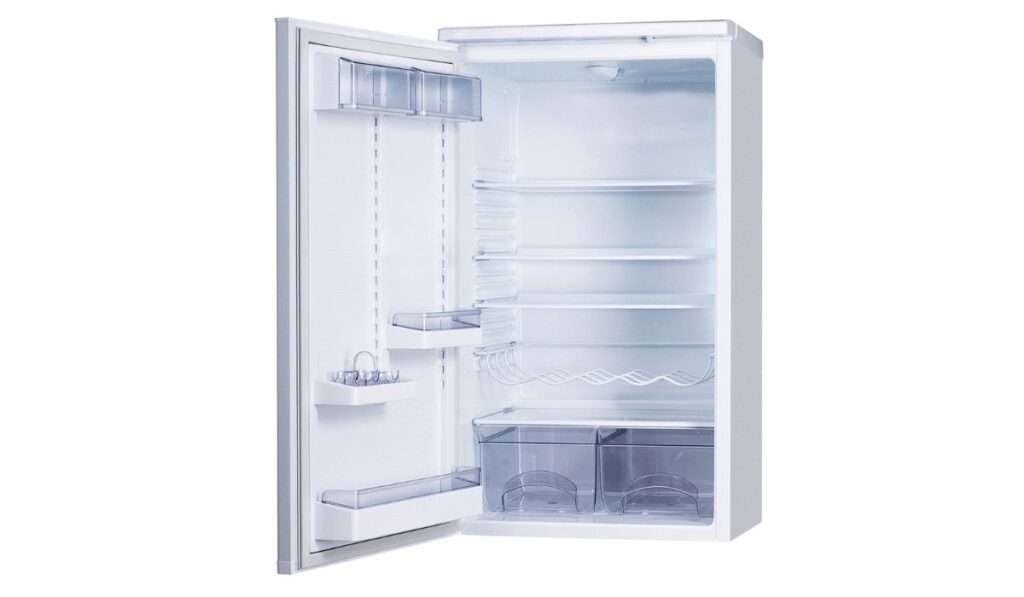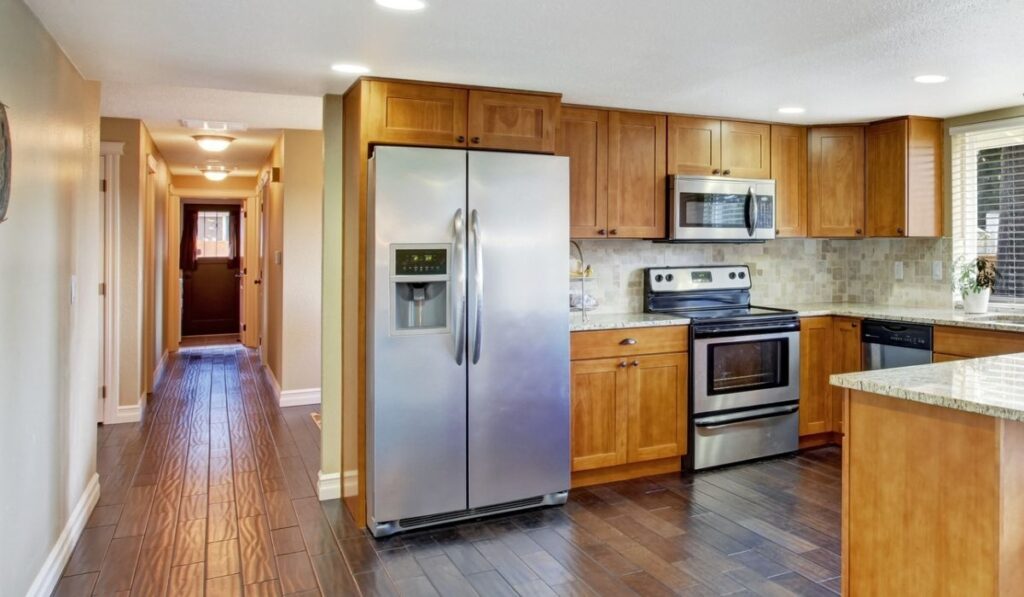Condensation in refrigerators appears as water droplets on the inside of the door, on the shelves, or the walls. Excessive condensate may drip onto the floor, resulting in small puddles of water. Not only is this a mess, but it can also damage your refrigerator and the food inside. Fortunately, there are a few tried-and-true ways to prevent condensation in your fridge.
To prevent condensation, make sure the gasket is in good condition, and the door shuts properly. If you live in a humid climate, turn the thermostat to low and keep the door open for as little time as possible. Also, ensure there is enough airflow around the fridge.
Condensation tends to occur when warm, moist air comes in contact with a cold surface, and the moisture turns into water droplets. Refrigerators often attract condensation in humid weather or when there’s a leak in the unit. That’s why it’s important to take precautions against condensation to keep your fridge running smoothly. Let’s see why your refrigerator might be producing condensation and how to fix the problem.
What Causes Excessive Condensation in a Refrigerator?

Thanks to a controlled and sealed atmosphere, refrigerators maintain a cool and dry environment. Whenever there is a change in external temperature, the compressor kicks in and stabilizes the conditions.
Condensation is a byproduct of this stabilization process and is more likely to occur when the moisture level increase inside the refrigerator. There can be several reasons for this:
- The refrigerator is not sealed properly, allowing warm and moist air to enter continuously and cool down, forming condensation. This happens either because of a worn gasket or a loose door.
- The weather is too humid, and even regular air exchange is causing condensation. This usually happens on rainy days.
- You’re putting items that are too hot inside the fridge; the vapor-filled steam rapidly cools down and condenses when it touches the cold fridge walls.
Sometimes, the external environment isn’t the primary source of the problem. Factors such as fault temperature controls, improper refrigerator placement, and faulty cooling systems can also cause condensation.
How to Stop Condensation in Your Refrigerator
A few simple steps can help reduce or prevent condensation in your fridge. Here are some of the most effective methods:
Check and Fix the Gasket
The most common cause of condensation is warm air leaking into the refrigerator, which happens when the gasket — the rubber or foam strip around the door — isn’t sealing properly.
To check if the gasket is the issue, close the door on a piece of paper and try to slide it out. If it moves easily, the gasket needs to be replaced.
Place the Refrigerator in the Right Spot

When a refrigerator is placed in a crowded, unventilated area, the outer coils cannot exchange the heat properly, leading to a higher temperature inside and then condensation.
Make sure your refrigerator has at least 4 inches of space on each side and even more on the back. Also, please keep it away from direct sunlight and heat sources.
Adjust the Temperature Settings
Whenever you open the refrigerator door, some warm air enters and attains the same temperature as the fridge in a few seconds. The much colder air compensates for moisture.
But when the temperature inside the refrigerator isn’t too different from the outside, the air can’t go past the threshold, and all the moisture ends up as condensation. To avoid this, always reset the thermostat when the weather changes.
Troubleshoot Defroster or Drain Issues
Sometimes defroster drain pipes get clogged by ice, resulting in increased moisture inside and thus condensation. You can clear the drainpipe by turning the refrigerator off for a while and then blowing compressed air into it. If your refrigerator has an automatic defrost cycle, make sure it’s functioning properly.
Or maybe condensation isn’t the issue; instead, the drains might not be working properly, causing water pooling. Usually, this is the case when you see water on the refrigerator floor or in drip pans only. If this is your problem, clean the drains and the pans under the fridge.
Follow Good Practices
General good practices like keeping the lid over liquid dishes and avoiding opening the door too often will help reduce condensation. Also, make sure you don’t put very hot items inside the fridge. Finally, wipe up any spills as soon as they happen. These might seem small, but they make a big difference in preventing condensation.
These tips should help reduce or prevent condensation in your refrigerator. However, if the problem persists, it might be due to a serious leak in the cooling system, and you should call a technician.
How to Fix a Damaged Seal on the Fridge Door
The seal around refrigerator doors is usually made of rubber, and it is called a gasket. Gasket size and shape are specific to models. As the gasket ages, it becomes prone to tears, bumps, and rips.
Once the seal is damaged, cold air escapes from the fridge, and warm air enters, overloading the compressor and causing condensation to form. If your fridge has a damaged seal, it’s best to find a replacement gasket (on Amazon) as soon as possible.
Below is a step-by-step guide on how to replace a refrigerator door seal:
- Shut off the power to the fridge.
- Run your finger along with the rubber seal, lightly lifting it away from the door.
- Locate the spots where it is secured with screws. Then, loosen the screws using a Phillips head screwdriver (on Amazon); there’s no need to remove them all the way.
- Gently peel away the old seal from its shell.
- Dip a towel into a soap and water mixture and wipe the door shell and the new seal with it.
- Apply a light coat of silicone grease (on Amazon) to the new seal on the side that touches the door. It isn’t necessary, but grease improves the seal’s life.
- Feed the new seal into the slot on the door; start at a corner and work your way around.
- Ensure that the seal is secured in place and there are no bumps.
- Tighten the screws. Test the seal by closing the door on a piece of paper. The paper should not slide easily.
